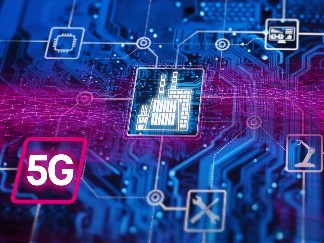
The 5G network is a game-changer, both in physical locations and online capabilities, driving innovation across various sectors.
Here’s how: 1. Enhanced Connectivity and Speed – Physical Locations: 5G offers faster data transfer rates, reduced latency, and increased connectivity.








This is particularly beneficial for smart cities, where interconnected devices, like traffic lights, public transportation, and security systems, can communicate in real time.
Online Capabilities: 5G enables the rapid transfer of large amounts of data, which is crucial for innovations in fields like augmented reality (AR), virtual reality (VR), and streaming services. This enhances the user experience by providing smoother, faster, and more reliable online interactions.
2. IoT Expansion
Physical Locations: The Internet of Things (IoT) thrives on 5G’s capacity to support a massive number of connected devices. This leads to smarter, more efficient infrastructure in sectors like manufacturing, agriculture, and healthcare. For instance, smart factories can use real-time data from connected devices to optimize production lines and reduce downtime.
Online Capabilities: Online platforms can leverage 5G to manage and analyze data from IoT devices more effectively. This is crucial for developing predictive maintenance systems, smart home applications, and advanced logistics solutions.
3. Innovation in Healthcare
Physical Locations: 5G enables remote surgeries and real-time diagnostics through high-definition video streaming and low-latency communication between healthcare providers and patients. This could revolutionize healthcare access in rural or underserved areas.
Online Capabilities: Telemedicine services can expand significantly with 5G, offering more reliable and higher-quality virtual consultations. Additionally, the network’s capabilities allow for continuous monitoring of patients through wearable devices, with data being instantly available to healthcare professionals.
4. Autonomous Vehicles
Physical Locations: The development of autonomous vehicles heavily relies on 5G technology. The low latency and high reliability of 5G networks are critical for the real-time communication between vehicles, infrastructure, and cloud systems, enabling safer and more efficient autonomous driving.
Online Capabilities: The vast amount of data generated by autonomous vehicles can be processed and analyzed in real-time, leading to continuous improvements in vehicle performance, safety features, and navigation systems.
5. Smart Retail and Consumer Experience
Physical Locations: 5G can enhance in-store experiences with technologies like AR, where customers can visualize products in real-time or receive personalized offers. Retailers can also manage inventory more effectively with real-time tracking and analytics.
Online Capabilities: E-commerce platforms can offer more immersive shopping experiences, such as virtual fitting rooms or 360-degree product views, thanks to the increased speed and reliability of 5G networks.
6. Edge Computing and Cloud Services
Physical Locations: 5G supports edge computing, which processes data closer to the source rather than relying on distant data centers. This reduces latency and allows for faster decision-making, which is critical in industrial automation, gaming, and content delivery networks.
Online Capabilities: The integration of 5G with cloud services enables more efficient data storage and retrieval, leading to the development of new applications and services that were previously not feasible due to bandwidth and latency limitations.
In summary, the combination of 5G’s physical and online capabilities is a significant driver of innovation. It enables more complex, data-intensive applications across various industries, paving the way for new business models and enhancing the quality of services offered to consumers and enterprises alike.

Leave a Reply